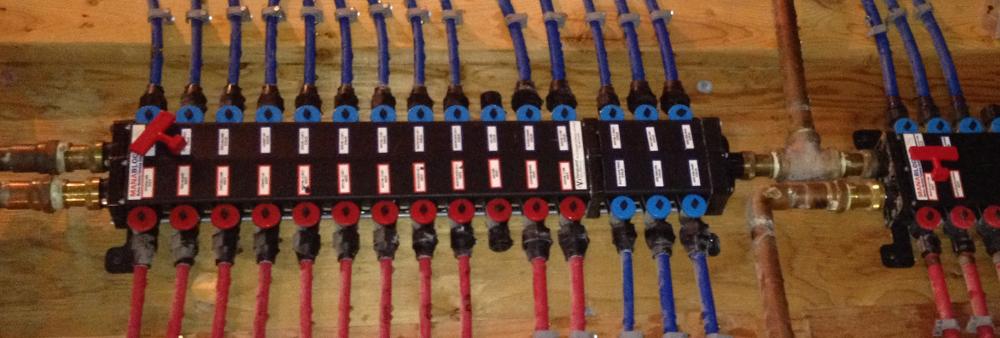Proper Use of PEX Pipe in Brewery Applications

IMPORTANT DISCLAIMER
PEX is an excellent product when used properly.
Neither ChillX Chillers, Chillking Chillers, Inc. nor their agents, employees or any other persons acting on its behalf, makes any warranty, express or implied, with respect to the use of any information, apparatus, method or process disclosed in this publication or that such use may not infringe privately owned rights, or assumes any liabilities with respect to the use of, or for damages resulting from the use of, any information, apparatus, method or process disclosed in this publication or is responsible for statements made or opinions expressed by the author of this publication.
PEX and Generic Brands Or Similar
CHILLKING Chillers Inc. and Patrick G. King provide this information based on their experience, education, and training. It is to be viewed as an opinion only. This is not meant to be critical of a particular manufacturer or brandname. PEX when used for certain applications appears to be a very suitable substitute for copper. By stating that PEX is suitable for certain applications is in no way meant as an endorsement. Please take from this experience and opinion and use it to make a decision that is best for your company.
Chillking has a great deal of experience working with many different products. We have used PEX in the field on some of our applications when we felt it was suitable. For this paper we are considering PEX for breweries. This paper is based on the experience of Chillking Chillers using PEX and similar products. PEX is as any product perfect for a particular application.
PEX for Brewery Applications
We do NOT recommend PEX for brewery applications for a number of reasons.
We do NOT recommend PEX for brewery applications for a number of reasons. The most critical is size. If you are planning to pump your product through PEX lines, please, at least read the below sections named PERMEABLE and CAUTION. PEX was originally marketed to European markets and is sized accordingly. PEX was invented in the 1950's and improved by Dow Corning in the 1960's. For this report I will not go into the chemical make up or how it is manufactured. We will concentrate on its usability in a brewery environment. There has been a rash of lawsuits regarding PEX failures however I believe many of these failures are user induced. I will get into that later.
Metric To Fractional Pipe Size
Since PEX was targeted for European markets it is sized in metric and converted to U.S. sizes. We have photographs we'll soon add to this article and at the bottom to document our experience. Most brewery users are going to be familiar with 1" PEX if they considered using PEX. Disclaimer: when I refer to 1" PEX, it is not 1" but the sizes that are being proven by photographs and the actual product specs. The ID of 1" PEX is .77". It will vary by brand. I have seen it fit snugly on a 1" brass fitting. That would indicate the ID of the pipe is .75". That is far less than 1". The brass fitting loses even more because the ID of a 1" brass fitting is .70". That equates to 11/16 inside diameter that the water/pg flows through. Your flow rate is always reduced to the smallest ID within the system. The final ID for water/glycol flow is 11/16". Let's examine how much of a difference that will make in flow. 11/16" is less than 3/4" but for ease we will use 3/4" to compare the GPM. 1" copper vs 1" (actually 11/16" ID) PEX. This calculation is based on 1 BTU to raise 1 pound of water 1F in 1 hour. 1 gallon of water weighs 8.34 pounds.
BTU Load Calculation
1" copper (CPR) vs 1" rated PEX (actual 11/16" ID) 1" PEX with crimp fittings is reduced to 11/16" ID. Thus we have to use that number for GPM.
1" CPR, 12 PSI, 16 GPM x 60 minutes = 960 gallons x 8.34 lbs = 8006.4 lbs x 6F = 48K BTU
1" PEX, 12 PSI, 11 GPM x 60 min = 660 gallons x 8.34 lbs = 5504.4 lbs x 6F = 33K BTU
There is a significant difference between 48,000 BTU and 33,000 BTU. If PEX is used as the main feed and then branches are T'd from it the flow is even more reduced. Although the primary line is carrying 16 GPM it doesn't mean the secondaries are. If it is branched into two circuits the flow is close to 8 GPM per line.
PEX will carry about 30% less BTU than 1" ID copper or Cool Fit Pipe.
As you can see 1" PEX will carry about 30% less BTU than 1" ID copper or Cool Fit Pipe. Upsizing the PEX can help reduce the problems however be very cautious. The pipe I used for these measurements came from a location we changed out, the pipe said 1 1/8" however it was the OD rating with 1" ID PEX size which is actually less than 3/4" with brass fittings. The problem is not solved by using the fittings that use an "O" ring seal by slipping over the outside of the pipe. Your 1" PEX would still have an ID of .77" or 3/4". I was generous in the above calculations because the ID of the brass fitting is .70" or 11/16" which is 1/16 less than 3/4".
Please read the original document in it's original form from Chillking for more! Document attached below.
References
| Title | Document Type | Extension Type |
|---|---|---|
| Chillking Application Notes - Use of PEX Pipe in Brewery Applications | Application Note |
